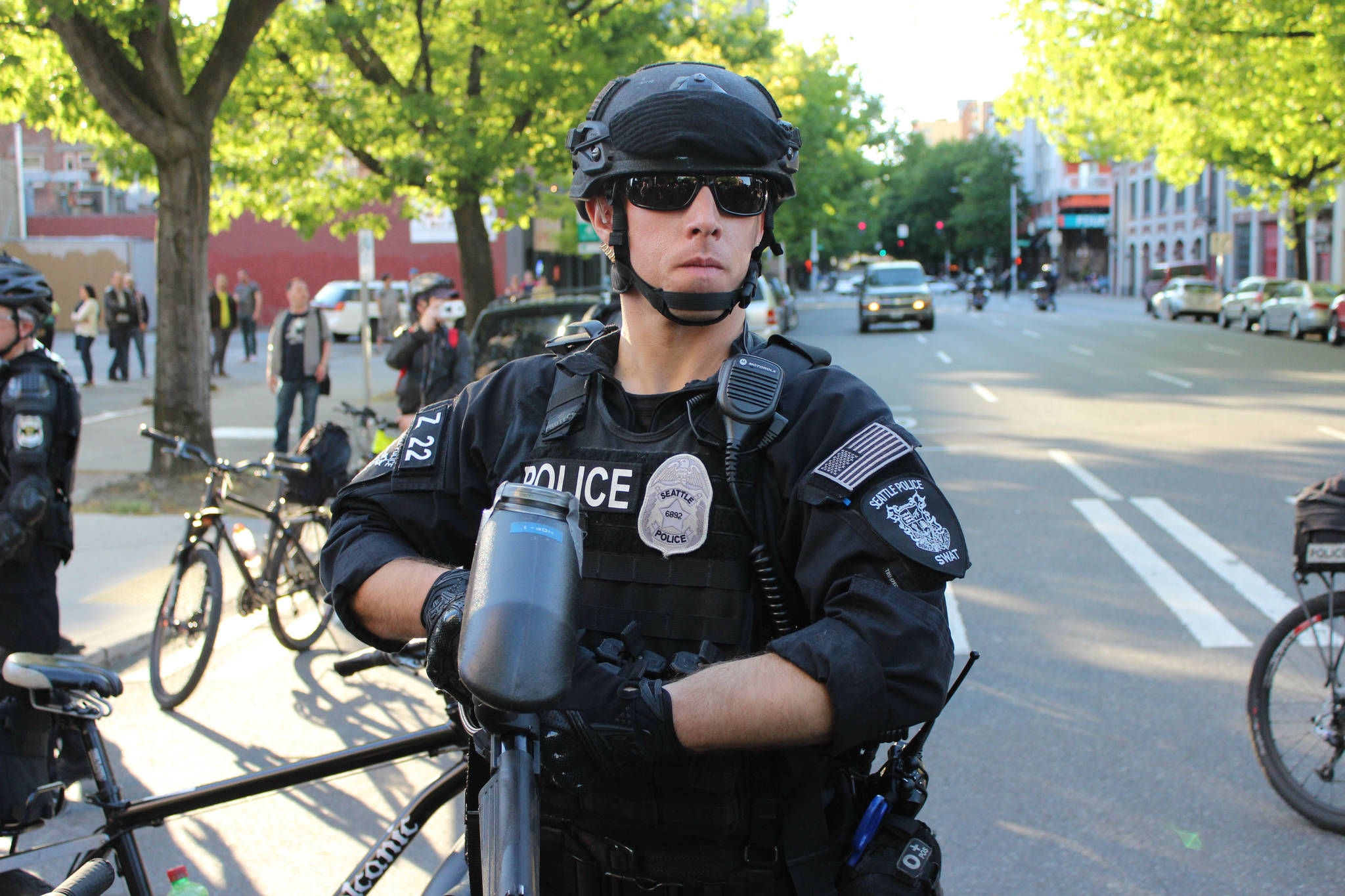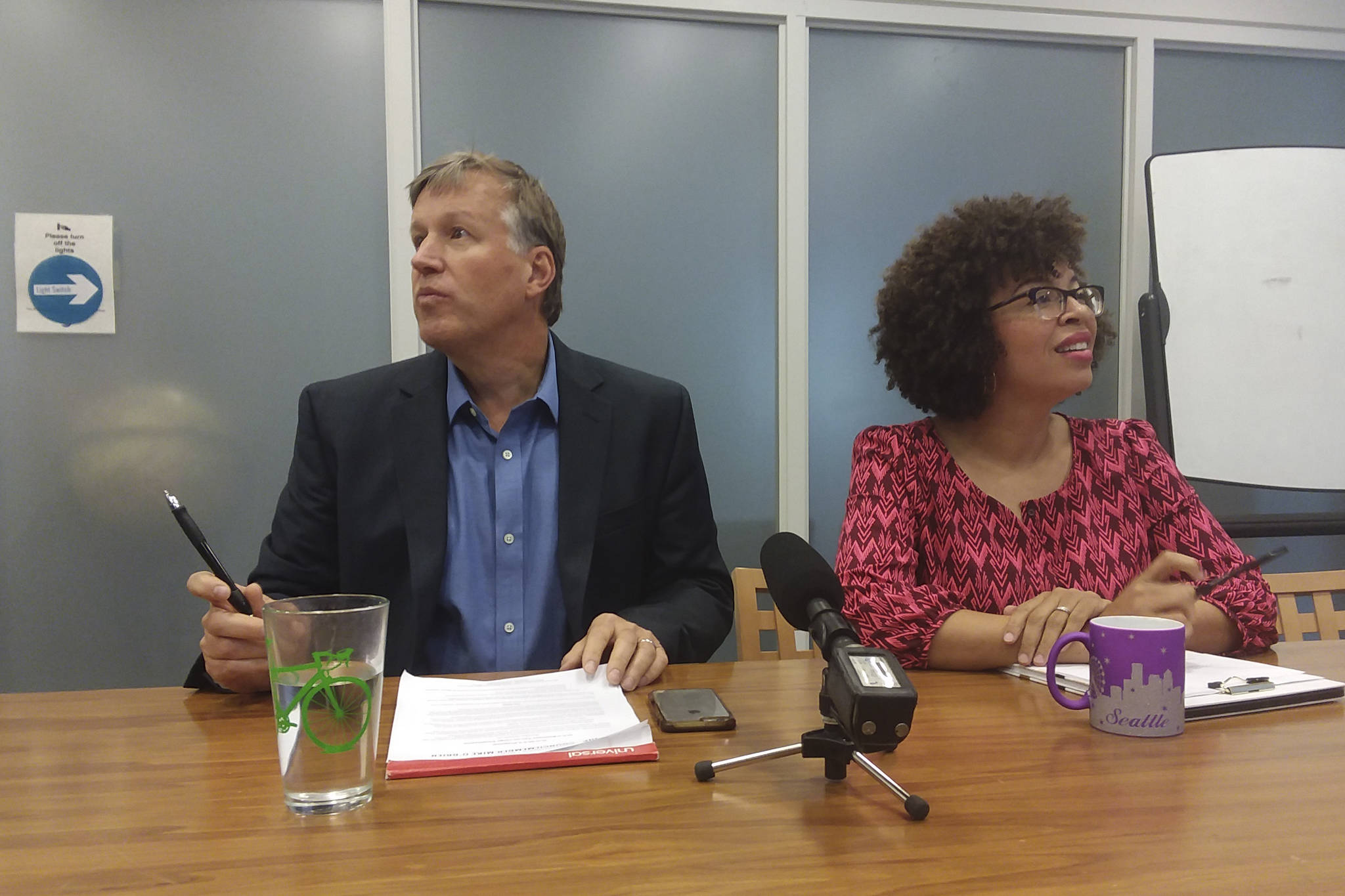Authorities have published the annual point-in-time count of King County’s homeless population. As of January 27, there were a minimum of 3,857 people sleeping outside in Seattle. Because of changes in the methodology of counting, that number can’t be directly compared to the 2,942 counted last year.
Countywide, a total of 11,643 people were experiencing homelessness, according to All Home, which conducted the count. This figure includes 6,158 people who were living in shelters or emergency housing and 5,483 people living on the streets.
These high numbers don’t necessarily indicate incompetence on the part of local governments’ attempts to address homelessness, according to All Home director Mark Putnam, who today presented the report to a co-meeting of the city and county councils. He said that last year, 7,500 households moved from homelessness into housing in King County. And according to Seattle Human Services Department Director Catherine Lester, the city and county have added more than 500 new beds in authorized homeless encampments over the past several years.
But despite these countermeasures, local residents keep becoming homeless, typically after losing their job. “Everybody…knows that homelessness is a symptom of many other failures,” said Adrienne Quinn, Director of Seattle/King County Public Health. These include the expensive housing market and a fraying social safety net. To partly address the former, Quinn said, the county is currently working to produce “modular [housing] units which come in at a lower cost” than other housing options.
Real Change and some other homeless advocacy organizations criticized All Home for not releasing the raw count numbers in January, when they were collected. All Home said they needed the time to crunch the numbers. In past years, the one night count has used a blunter formula for inferring the overall homeless population from specific symptoms of homelessness (for example, the number of tents counted). In 2017, the count adopted a new, more fine-grained methodology for inferring population based on symptoms. As a result, comparing this year’s numbers to last years’ is “inevitable, but a little apples and oranges,” said Putnam.
The value of the new methodology is that it gives authorities “a better understanding of who is homeless…and why,” said Lester.
According to the report, 70 percent of King County’s homeless population lives in Seattle. As in previous years, counters found that most resided in the county before becoming homeless, typically either as a renter or with friends or relatives. The report estimates that there are 2,773 “chronically” homeless people in King County—that is, people who have been “sleeping in places not meant for human habitation or staying in emergency shelters for a year or longer, or experiencing at least four such episodes of homelessness in the last three years, and also living with a disabling condition.” Some more estimates from the report:
-Number of homeless veterans: 1,329
-Number of homeless households with children: 905
-Number of unaccompanied youth and young adults: 1,498
-Percentage of local homeless people with a history of experiencing domestic violence or abuse: 40
-Percentage of local homeless queer people with a history of experiencing domestic violence or abuse: 58
-Relative to the general King County population, white and especially Asian people are underrepresented among the homeless, while Latino and especially black people are overrepresented
-Men are about twice as likely as women to be homeless
One of the report’s takeaways is that “housing ends homelessness.” According to the report, 92 percent of local homeless people say they would move into decent housing if they could. According to Putnam, more than 90 percent of homeless people who get housing retain it for at least two years.
“The general public thinks we’re failing miserably” at addressing homelessness, said Seattle City Councilmember Bruce Harrell at the meeting. “No matter how much we try to do, we’re not winning in the court of public opinion.”
County Councilmember Rod Dembowski agreed, comparing the task of ending homelessness to “trying to dig a hole to China.”
One obstacle to creating adequate shelter and housing for homeless people, said Quinn, is resistance from neighbors to having such facilities sited nearby. “Every time we try to site a shelter for single adults,” she said, “we get community pushback” from people who don’t want riffraff in their neighborhood. That resistance had been on display during public comment before Quinn spoke. One commenter—Melody from Belltown—urged the councils to literally “outlaw homelessness…We shouldn’t allow them to live on our streets.”
cjaywork@seattleweekly.com
This post has been updated.








